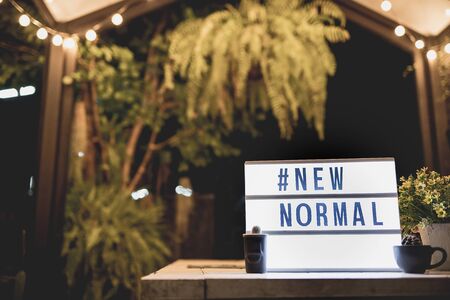Introduction to Personalised Number Plates in British Motoring Culture
There is something quintessentially British about the pursuit of individuality, a subtle rebellion against uniformity that finds its expression even on our roads. Personalised number plates have long been woven into the tapestry of British motoring culture, serving not merely as identifiers but as badges of identity, status, and sometimes wit. From the stately classics cruising through Belgravia to the latest supercars spotted outside Knightsbridge boutiques, bespoke plates are cherished as much for their exclusivity as for their ability to make a statement. The allure lies in their uniqueness—whether it’s a clever play on one’s name, initials, or an evocative phrase, these plates often spark curiosity and conversation wherever they go. Their popularity has soared over the decades, fuelled by celebrity endorsements and high-profile auctions where rare registrations fetch staggering sums. Yet beneath the glamour and prestige is a structured legal framework governing how these symbols of personal flair can be transferred or changed. Understanding this journey—from acquisition to legal transfer—is essential for anyone wishing to join the ranks of Britain’s proud personalised plate owners.
2. Legal Prerequisites for Changing Your Private Registration
Before embarking on the journey to change your personalised number plate in the UK, it is vital to understand the legal landscape set forth by the Driver and Vehicle Licensing Agency (DVLA). The process is steeped in tradition, yet thoroughly modern in its attention to detail and documentation. Below, we take a closer look at the key prerequisites every Brit must satisfy before initiating a transfer.
DVLA Requirements: The Gatekeepers of Personalisation
The DVLA serves as the ultimate authority when it comes to number plate transfers. To start, both the vehicle and the cherished registration must be eligible for assignment or retention. Crucially, you cannot make a vehicle appear newer than it actually is by transferring a later registration mark onto an older car—a point of British motoring etiquette as much as regulation.
Vehicle Eligibility Criteria
| Requirement | Description |
|---|---|
| Type of Vehicle | Must be registered with DVLA and available for inspection if requested. |
| Tax Status | Must have valid road tax or be declared SORN (Statutory Off Road Notification). |
| MOT Certificate | If over 3 years old, must have a current MOT certificate. |
| Type Approval | Must be able to move under its own power; non-roadworthy vehicles are ineligible. |
Essential Paperwork: What You’ll Need in Hand
Preparation is quintessentially British, and so is having your paperwork perfectly arranged. Here’s what you’ll need:
- V5C Log Book: Proof that you are the registered keeper of the vehicle.
- MOT Certificate: If applicable, a current certificate is required.
- Retention Document (V778) or Certificate of Entitlement (V750): For registrations not currently assigned to a vehicle.
- Proof of Taxation/SORN: Ensures compliance with road use regulations.
A Word on Timelines and Authenticity
The DVLA prides itself on efficiency but expects applicants to ensure all documents are genuine and up-to-date. Any discrepancies can result in delays or refusal. Thus, British thoroughness in double-checking every form and certificate pays dividends down the road.
![]()
3. Step-by-Step Guide to Transferring Personalised Plates
Transferring a personalised number plate in the UK is a well-established process, steeped in tradition and regulated by the Driver and Vehicle Licensing Agency (DVLA). Whether you are assigning your cherished registration to a new vehicle or removing it for future use, following the correct procedure ensures both legality and peace of mind. Here’s an accessible, detailed walkthrough for navigating this quintessentially British motoring ritual.
Preparing for Transfer: Gathering Your Essentials
Before embarking on the transfer process, ensure you have all necessary documents at hand. You’ll need the V5C logbook for both vehicles involved (or the retention document if your plate is not currently assigned), valid MOT certificates if applicable, and up-to-date road tax. Attention to these particulars will set a seamless tone for the journey ahead.
Assigning Your Personalised Plate to a Vehicle
1. Apply Online or by Post
The most efficient route is via the official DVLA website, where you can assign your plate instantly if all details are in order. Alternatively, traditionalists may prefer submitting a postal application using form V317. Whichever method you choose, accuracy and completeness are essential—after all, British bureaucracy has little tolerance for errors.
2. Await Confirmation from DVLA
Once submitted, the DVLA will review your application. Online assignments often receive near-instant approval, while postal applications may take up to two weeks. You’ll receive confirmation and instructions on when to fit your new plates—a moment worthy of a celebratory cup of tea.
Removing or Retaining Your Plate
1. Applying to Remove a Plate
If you wish to remove your personalised number for use later or to sell it on, you must apply through the DVLA using form V317—either online or by post. The agency will place your cherished number on retention and issue a new registration for your vehicle.
2. Receiving Your Retention Certificate
The DVLA will send you a retention certificate (V778) confirming your right to use the plate in future. Keep this document safe; it’s as valuable as any family silver or heirloom within the world of British motoring.
A Final Word on Compliance
Remember, you must only display number plates that match your official documentation at all times. Once confirmation arrives from the DVLA, fit your new plates and inform your insurer—a small but crucial detail in safeguarding your beloved motorcar and its storied identity.
4. Associated Costs and Fees Explained
When navigating the process of changing personalised number plates in the UK, understanding the full spectrum of associated costs is paramount. This ensures that no unwelcome surprises arise further down the road. Below, we offer a transparent breakdown of the fees and charges that drivers might encounter.
Government Fees
The Driver and Vehicle Licensing Agency (DVLA) administers most official fees relating to number plate changes. Here’s a summary:
| Service | Cost (as of 2024) |
|---|---|
| Retention Certificate Application (V778) | £80 |
| Assignment Fee (to transfer a plate to a vehicle) | Included in retention fee |
| Replacement Log Book (V5C), if required | £25 |
| New Number Plate Manufacturing* | £15–£50 per set |
*Note: The cost for manufacturing new physical plates varies between suppliers and depends on materials and custom features.
Additional or Hidden Charges
- Private Sale or Broker Commission: If you purchase your plate from a broker or dealer, expect commission fees which can range from £40 to several hundred pounds, depending on the value of the plate.
- Courier or Handling Fees: When urgent delivery is requested for documents or plates, extra charges may apply.
- Professional Fitting Services: Some drivers opt to have plates professionally fitted at garages, typically costing £10–£30.
- Legal Compliance Checks: Ensuring your new plates comply with British Standard BS AU 145e may incur a nominal charge at reputable outlets.
Total Estimated Cost Example
| Description | Typical Range (£) |
|---|---|
| Total Government & Processing Fees | £80–£105* |
| Bespoke Plate Purchase (optional) | Varies widely (£250–£100,000+) |
| Add-on Services & Miscellaneous Charges | £20–£150+ |
*Assumes no additional replacement documentation required.
A Note on Transparency and Budgeting
The key to avoiding hidden charges is to request a detailed quote before engaging any third-party providers and always confirm what is included in government-related payments. By being aware of these typical costs upfront, you can ensure your cherished registration journey remains as smooth and British as afternoon tea—sans unexpected bills.
Pitfalls and Common Mistakes: Avoiding Legal Hiccups
When embarking on the journey to change your personalised number plate in the UK, it’s all too easy to fall foul of certain common errors—missteps that could land even the most fastidious driver in hot water with the DVLA or local authorities. Understanding these pitfalls is essential if you wish to remain on the right side of British motoring law and protect the unique identity of your cherished vehicle.
Incorrect Documentation Submission
Perhaps the most frequent mistake is submitting incomplete or incorrect documentation. The DVLA requires specific paperwork—such as your V5C logbook and retention certificate—to process a plate change. Ensure every detail matches exactly; even a minor discrepancy can delay proceedings or result in outright rejection.
Failure to Notify Your Insurer
Another overlooked step is informing your car insurance provider. Failing to update them about your new registration could invalidate your policy, leaving you exposed should you need to make a claim. Always double-check with your insurer immediately after the transfer is completed.
Driving With Non-Compliant Plates
Some drivers, caught up in excitement, affix plates before receiving official DVLA confirmation, or purchase plates not meeting British Standards (BS AU 145e). Displaying non-compliant or unauthorised number plates is illegal, potentially leading to fines and an MOT failure. Only fit plates once you have approval, ensuring correct font, spacing, and reflectivity as required by UK law.
Overlooking Vehicle Tax and MOT Status
Your vehicle must be taxed or declared SORN (Statutory Off Road Notification) and possess valid MOT at the time of plate transfer. Neglecting this can cause unnecessary complications. Before initiating any changes, confirm both are up-to-date for seamless processing.
The Right Approach: Diligence and Patience
The key to avoiding legal hiccups lies in attention to detail and patience. Double-check forms, await DVLA confirmation before fitting new plates, update all relevant parties, and ensure compliance with display regulations. By steering clear of these common missteps, you’ll ensure your personalised number plate becomes a source of pride—not a legal headache—in true British style.
6. Conclusion: Embracing Your Unique Motoring Identity
In the grand tapestry of British motoring, a personalised number plate is more than a mere sequence of letters and digits—it is a subtle yet powerful emblem of individuality and heritage. The journey to changing your personalised number plate, though meticulously governed by legal statutes and DVLA protocols, ultimately allows you to weave a touch of personal narrative into the very fabric of your vehicle. By following the established legal steps and understanding the associated costs, motorists not only uphold the revered traditions of British road law but also ensure that their bespoke registration stands as a legitimate testament to their unique identity. As you reflect on this process, remember that every detail—from retaining documentation to observing correct display—serves to protect both your investment and the integrity of our cherished motoring culture. Embrace your distinctive plate with pride, but always within the bounds of legality, for therein lies the true spirit of British motoring tradition.


